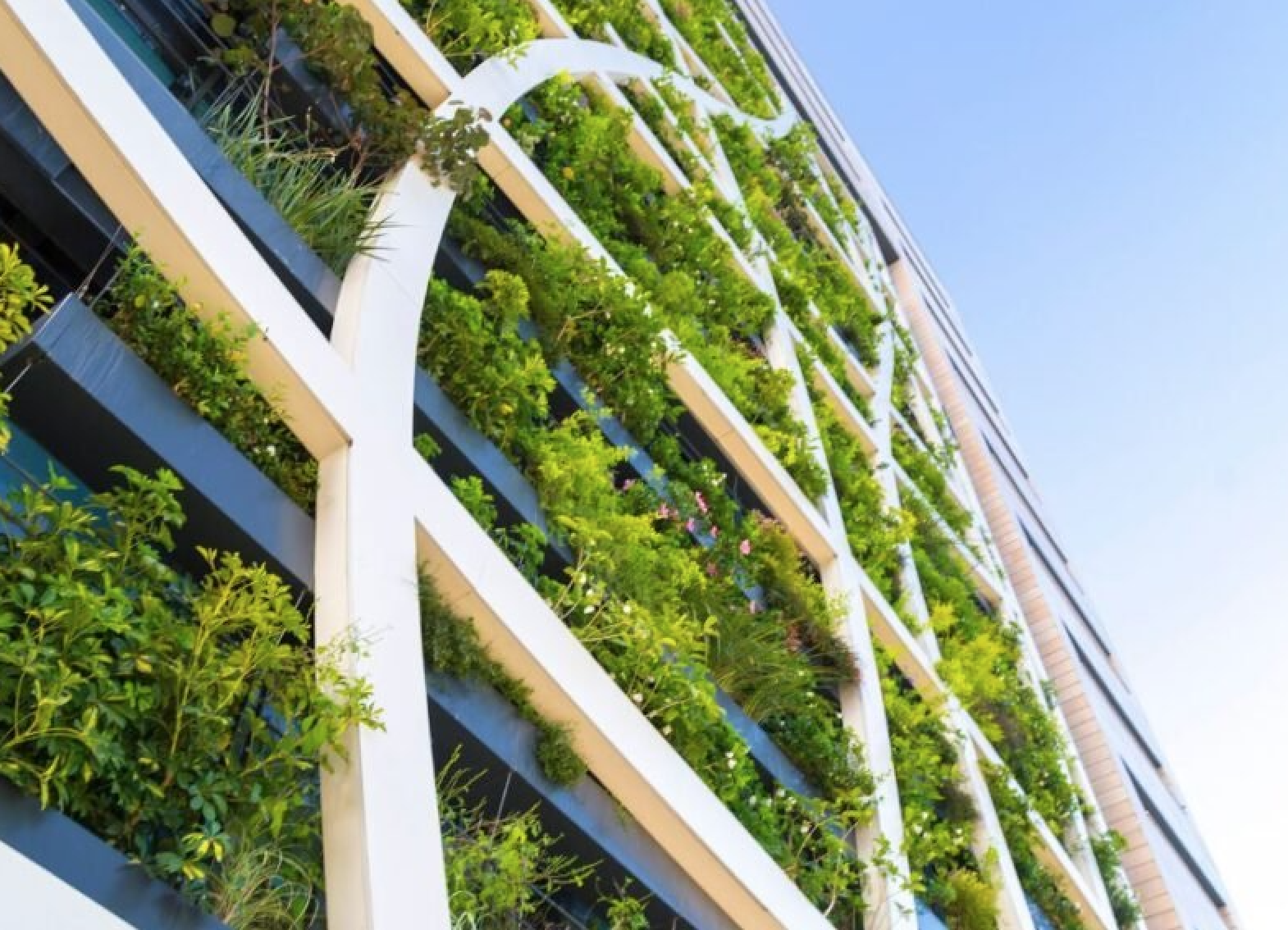The most effective biophilic design considers the environmental impact of every incorporated aspect, placing importance on sustainability over “green” looks.

This article was originally published by Allwork.Space.
The term “biophilia” was created by psychoanalyst Erich Fromm who believed humans are genetically designed to thrive in natural settings/nature. Many office spaces are beginning to catch on to the fact that nature and plants make humans feel good and work better, so they’re designing their spaces with this in mind.
Biophilic design is gaining popularity for its multitude of benefits, but some organizations might be missing the mark and instead are implementing “greenwashing” design practices.
Popular biophilic projects often fail to consider the impact of their greenwashing (false impression of sustainability). The most effective biophilic design considers the environmental impact of every incorporated aspect, placing importance on sustainability over “green” looks.
In order to make the most impact as well as go beyond greenwashed aesthetics, biophilic design should assist in increasing the overall sustainability of a project and be done in collaboration with recognized standards like LEED Gold certifications or net-zero emissions.
Jaconetti offers these three tips for organizations that wish to implement biophilic design practices:
1. Get Sustainability Certifications
Biophilic design can be a key contributor to certification systems like LEED, BREEAM or WELL, which provide guidelines for measuring the sustainability of a project. This encourages a positive impact on the health and wellness of inhabitants, surrounding communities, and the environment.
2. Prioritize Wellness
Biophilic designs can help promote wellness through a multitude of strategies that may foster both physiological, psychological and cognitive benefits. Forms, patterns, materials and space planning are all ways to connect occupants, either directly or indirectly with nature.
Biophilic design has wellness benefits too. Those who work in offices with access to natural light sleep an average of 46 minutes longer than those who work without natural lighting. Viewing nature scenes improves people’s ability to focus, reduces stress and increases overall happiness.
Incorporating these design elements as well as proper ventilation with a high percentage of filtered outside air can boost wellness among building occupants.
3. Strive for Energy Efficiency
Installing energy efficient materials, such as windows, can lower both costs and energy usage related to heating and cooling a project. Since fossil fuels are still the predominant source of energy in the world, saving energy lowers greenhouse gas (GHG) emissions.
By rescuing the amount of GHG we are putting into the atmosphere, we can help mitigate some of the more severe climate-related calamities and have a positive impact on health by preserving cleaner air. Project teams should focus on reducing the use of non-renewable energy sources wherever possible.
These are the key components of biophilic design, according to Jaconetti:
- Natural material selection. Timber, cotton and other renewable resources should be favored over synthetics. Every day more innovative products such as mycelium (the vegetative part of a fungus)-based flooring are gaining more traction and attention. If a natural material is not the right fit then we should focus on reclaimed materials to limit environmental impact, particularly carbon footprint.
- Landscape design. It is a common misconception that biophilic design practices should focus only on things inside a building like plants and natural motifs. Prioritizing landscape design can provide ample environmental benefits and encourage connectivity with nature. Focus should be placed on native plants that encourage pollinators to create havens for the functions of nature we are drawing inspiration from. Introducing native plants is also often more water efficient.
- Carbon cost or offset. When building and designing, it is important to understand the amount of carbon dioxide and other greenhouse gasses being released or captured. Natural materials with low embodied carbon include timber, cotton, rammed earth, linoleum, cork, stone and clay. Because nature recycles resources, these materials emit less carbon than those we fabricate using chemicals and heat. Plant-based materials actually capture CO2 as they grow, so their carbon footprint is limited to fabrication and transport. It’s important to understand the environmental footprint of natural materials and ensure they are responsibly sourced from a FSC certified forest.


